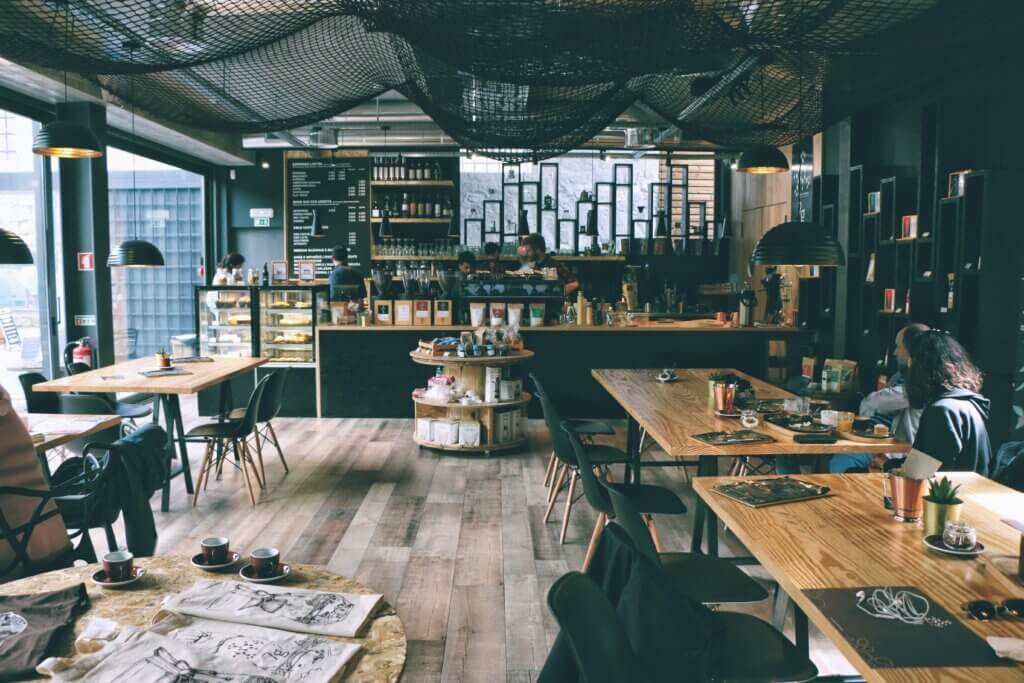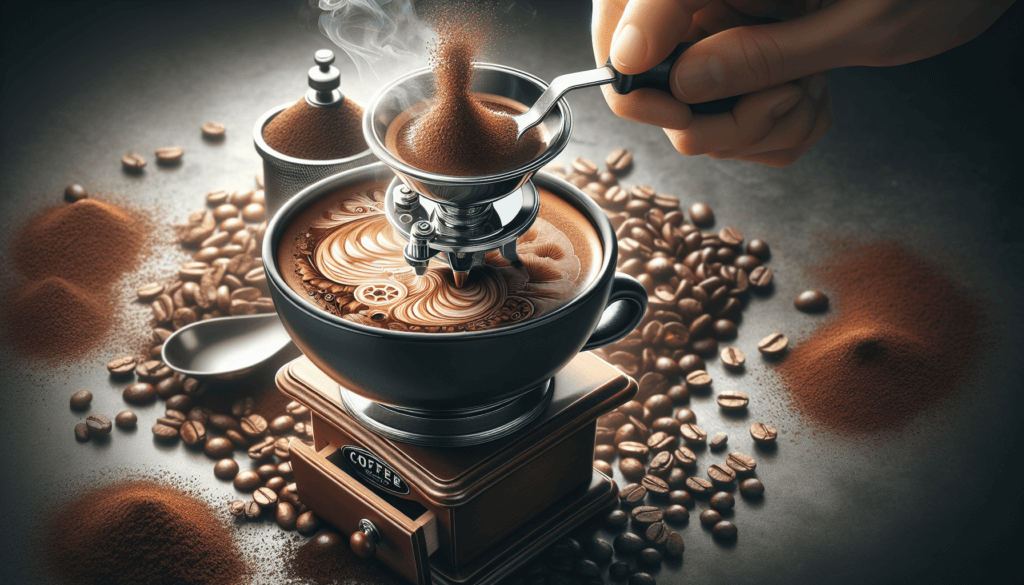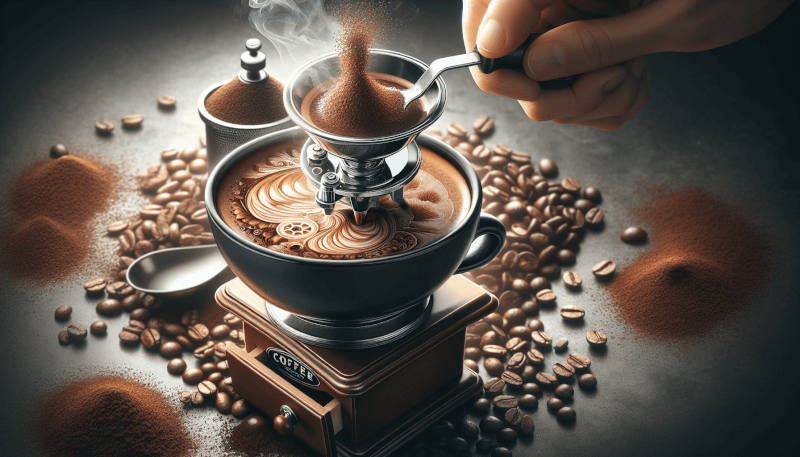You’re a coffee enthusiast, constantly in pursuit of the perfect cup of joe. But have you ever wondered what goes into brewing that delectable beverage? In this article, we will explore the best ways to implement quality control in your coffee brewing process. From selecting the right beans to ensuring the ideal water temperature, you’ll learn the essential steps to take your coffee brewing to the next level. So grab your favorite mug and get ready to elevate your coffee game to new heights.

Choosing the Right Coffee Beans
Selecting High-Quality Beans
When it comes to brewing the perfect cup of coffee, selecting high-quality beans is paramount. You want to start with beans that are fresh, flavorful, and free from defects. Look for beans that are grown in regions known for producing exceptional coffee, such as Ethiopia, Colombia, or Costa Rica. Additionally, consider purchasing beans from a reputable supplier who values quality and sustainability.
Determining the Roast Level
The roast level of your coffee beans directly impacts the flavor profile of your brew. Different roast levels, such as light, medium, or dark, offer distinct taste characteristics. Light roasts tend to have brighter acidity and more nuanced flavors, while dark roasts have a fuller body and bolder flavors. Experiment with different roasts to find the one that best suits your preferences.
Checking for Freshness
Freshness is crucial when it comes to coffee beans. Stale beans can result in a flat and uninspiring brew. Look for beans that have a roasted-on date or a “best by” date, and try to use them within a month of that date for optimal freshness. Avoid purchasing pre-ground coffee, as it may have already lost some of its freshness by the time you brew it.
Verifying the Origin
Understanding the origin of your coffee beans is essential for quality control. Different regions have unique flavor profiles due to variations in soil, climate, and cultivation techniques. Single-origin beans are revered for their distinct flavors, while blends offer a well-rounded and balanced taste. Verify the origin of your beans to ensure you’re getting the flavor profile you desire.
Evaluating for Defects
Prior to brewing, take the time to inspect your coffee beans for any defects. Look for signs of uneven roasting, such as beans that are too dark or too light. Check for any mold, insect damage, or odd odors. Beans with defects can negatively impact the flavor and overall quality of your brew. Select only beans that are visually appealing and free from any noticeable defects.
Proper Grinding Techniques
Using the Correct Grinder
To achieve the best possible flavor extraction, it is vital to use the correct grinder for your brewing method. Different brewing methods require various grind sizes, and using an appropriate grinder ensures consistent particle size distribution. Burr grinders are highly recommended due to their ability to produce uniform grounds, resulting in a more even extraction.
Adjusting the Grind Size
The grind size directly affects the rate of extraction and the overall flavor of your coffee. Finer grinds are typically used for methods like espresso, while coarser grinds are suitable for methods like French press. Experiment with different grind sizes until you find the ideal one for your brewing method. Remember to make adjustments based on variables such as coffee freshness, water temperature, and personal taste preferences.
Maintaining Consistency
Consistency in grind size is crucial for obtaining consistently great-tasting coffee. Inconsistent particle size distribution can lead to under-extraction or over-extraction, resulting in a subpar brew. Regularly calibrate your grinder, clean it thoroughly, and check for any signs of wear and tear. This ensures that your grinder remains accurate and reliable, providing consistent results with each use.
Avoiding Overheating
Excessive heat during the grinding process can have a detrimental effect on the flavor of your coffee. It’s important to prevent the grinder from overheating by allowing it to cool down between grinding sessions or using a grinder with built-in cooling features. Overheating can cause the oils in the beans to deteriorate, resulting in a bitter or burnt taste.
Preventing Contamination
Keeping your grinder clean and free from any residue or leftover grounds is essential for maintaining the quality of your coffee. Regularly disassemble your grinder and clean all its components, including the burrs, with a dry brush or a specially designed cleaning tool. Avoid cross-contamination by thoroughly removing any remnants of the previous grind before switching to a different coffee bean or blend.
Water Quality and Measurement
Using Filtered Water
Water quality greatly impacts the taste of your brewed coffee. Using filtered water helps remove impurities that can alter the flavor. Tap water often contains chlorine, sediment, and minerals that can affect the extraction process and the overall taste. Invest in a quality water filter or use filtered water from a reliable source to enhance the purity and quality of your brew.
Evaluating Water Hardness
Water hardness refers to the mineral content in water, mainly calcium and magnesium. It is important to evaluate the hardness of your water as it can affect the extraction process. Hard water can lead to scaling in your equipment and interfere with the coffee’s flavor profile. Consider using a water hardness test kit to determine the mineral content and adjust your brewing process accordingly.
Maintaining Proper Temperature
Temperature plays a vital role in extracting the flavors from your coffee beans. The ideal brewing temperature is around 195 to 205 degrees Fahrenheit (90 to 96 degrees Celsius) for most brewing methods. Invest in a reliable thermometer to ensure accurate temperature measurements during the brewing process. Consistently maintaining the proper temperature will help you achieve optimal flavor extraction.
Ensuring Correct Water-to-Coffee Ratio
The ratio of water to coffee grounds is critical in achieving a balanced and flavorful brew. The general rule of thumb is to use one to two tablespoons of coffee for every six ounces (177 milliliters) of water. However, this ratio can be adjusted based on personal taste preferences. Experimentation is key to finding the perfect water-to-coffee ratio that yields the desired strength and flavor for your brew.
Removing Impurities
Impurities in water, such as chlorine, can negatively affect the taste of your coffee. Consider using activated charcoal filters or specialty water filters to remove unwanted impurities. These filters help eliminate off-flavors and odors, allowing the true flavors of the coffee to shine through. Regularly replace the filters according to the manufacturer’s guidelines to maintain their effectiveness.
Optimizing Brew Time and Temperature
Understanding Extraction Time
Extraction time refers to the duration during which water interacts with the coffee grounds, extracting the desired flavors and compounds. It is important to understand the optimal extraction time for your brewing method to achieve a well-balanced and flavorful brew. Under-extraction can result in a weak and sour brew, while over-extraction can lead to a bitter and unpleasant taste.
Controlling Temperature
Maintaining a consistent and appropriate brewing temperature is crucial for achieving optimal flavor extraction. Different brewing methods require varying temperature ranges. For example, pour-over methods generally benefit from a slightly cooler water temperature compared to espresso brewing. Pay attention to the specific temperature recommendations for your chosen brewing method for the best results.
Implementing Pre-infusion Techniques
Pre-infusion is a technique that involves wetting the coffee grounds with a small amount of water before the main brewing process. This allows the coffee grounds to bloom and release trapped gases, resulting in a more even extraction. Pre-infusion is particularly beneficial for pour-over methods such as the V60 or Chemex. Experiment with different pre-infusion times to optimize the flavor extraction.
Avoiding Under/Over-Extraction
Under-extraction occurs when the brewing process does not extract enough flavors from the coffee grounds, resulting in a weak and sour brew. Over-extraction happens when the flavors are excessively extracted, leading to a bitter and astringent taste. To avoid these issues, ensure proper water-to-coffee ratio, adjust grind size, brewing time, and temperature according to the desired flavor profile.
Adjusting According to Brew Method
Different brewing methods require different approaches to achieve the best results. Factors such as grind size, water-to-coffee ratio, and brewing time may need to be adjusted based on the specific method employed. Be open to experimentation and adapt your brewing parameters to optimize the flavor extraction for each brewing method. Keep notes of the adjustments made to replicate successful brews consistently.

Consistent Brewing Measurements
Using Accurate Scales
Accurately measuring the amount of coffee and water used in each brew is crucial for consistency. Using a digital scale allows for precise measurements and repeatability, ensuring that each batch of coffee is brewed consistently. Invest in a reliable scale with appropriate weight capacity and readability. Make it a part of your brewing routine to weigh both the coffee beans and the water for accurate measurements.
Measuring Coffee and Water Properly
Each brew requires a specific amount of coffee and water to achieve the desired flavor profile. Measure the coffee by weight rather than volume for greater accuracy. Use a dedicated coffee scoop or scale to ensure consistency in your coffee measurements. Likewise, measure the water accurately using a liquid measuring cup or a kettle with volume markings. Precision in measurement is key to achieving consistent results.
Considering Brew Ratios
Brew ratios refer to the ratio of coffee to water used in a brew. It is often expressed as a ratio such as 1:16, representing 1 part coffee to 16 parts water. The brew ratio can be adjusted to achieve different strengths and flavors. Experiment with different ratios to find the one that suits your taste preferences. Note the brew ratio that yields the best results and replicate it consistently.
Adhering to Recipe Standards
Having a standardized recipe for each brewing method ensures consistency across batches and allows for easier troubleshooting. Note down the specific measurements and parameters for each brew method, including grind size, water temperature, bloom time, and brew time. Follow the recipe closely and make adjustments only after careful evaluation to maintain consistency and quality control.
Maintaining Consistency Across Batches
Consistency is key to establishing a quality control process in your brewing. When brewing multiple batches of coffee, strive to maintain consistent brewing measurements and techniques. Keep track of any adjustments made and take note of the resulting flavors and overall quality. This consistency will ensure that your customers or guests receive a consistently great experience with each cup of coffee.
Regular Cleaning and Maintenance
Cleaning Brewing Equipment
Regular cleaning of your brewing equipment is essential for maintaining optimal flavor and quality. Follow the manufacturer’s instructions for cleaning each specific piece of equipment, such as your grinder, coffee maker, and espresso machine. Use appropriate cleaning solutions and tools to remove any residue, oils, or impurities that may affect the taste of your brew.
Removing Coffee Residue
Coffee residue, such as oils and grounds, can accumulate in your brewing equipment over time. This residue can impact the flavor of your coffee and lead to a less pleasant brewing experience. To remove coffee residue, thoroughly clean all parts of your equipment that come into contact with coffee, including portafilters, filter baskets, and brew heads. Regular cleaning ensures the removal of any buildup and the preservation of flavor quality.
Descaling Coffee Machines
Over time, mineral deposits can build up in coffee machines, affecting the performance and flavor of your brew. Descaling is the process of removing these mineral deposits, usually caused by hard water. Consult your coffee machine’s manual for specific instructions on descaling. Regular descaling helps maintain the efficiency of your equipment and prevents any interference with the coffee’s flavor profile.
Replacing Worn-out Parts
As with any equipment, brewing equipment can experience wear and tear over time. Regularly inspect your equipment for signs of damage or deterioration. Replace any worn-out or damaged parts to ensure the equipment’s proper functioning and prevent any compromise in the quality of your brew. This includes items such as gaskets, seals, shower screens, and filters.
Calibrating Machinery
Certain brewing equipment, such as espresso machines, may require calibration to ensure optimal performance and flavor extraction. Consult your equipment’s manual or seek professional assistance for the proper calibration process. Regular calibration helps maintain consistency in brewing parameters and ensures that your equipment is operating at its best, delivering high-quality coffee.

Tasting and Sensory Evaluation
Training Tasting Panel
To implement quality control in your coffee brewing process, consider training a tasting panel. This panel consists of individuals with a developed palate and a thorough understanding of coffee flavors. Train them to evaluate coffee for various characteristics, such as acidity, body, sweetness, and balance. Their insights and feedback will help ensure the consistency and quality of each brew.
Implementing Cupping Sessions
Cupping sessions are an integral part of evaluating coffee quality and flavor profiles. Cupping involves steeping coffee grounds in hot water and evaluating the resulting brew through aroma, taste, and visual examination. Implement regular cupping sessions to evaluate the sensory attributes of your coffee, identify any defects, and make necessary adjustments to the brewing process.
Documenting Flavor Profiles
Documenting the flavor profiles of your coffee varieties is crucial for understanding your product and ensuring consistency. Keep detailed records of the flavors, aromas, and other sensory aspects of each coffee bean or blend that you use. This information helps you maintain a consistent taste profile, make informed purchasing decisions, and communicate effectively with your staff and customers.
Evaluating Aroma and Taste
Aroma and taste play a significant role in coffee quality and are key indicators of a well-brewed cup. Train your palate to recognize the different aromas and flavors present in coffee. Regularly evaluate the aroma and taste of your brews to identify any deviations from the desired flavor profile. Understanding the nuances of aroma and taste allows you to make precise adjustments to your brewing process.
Identifying Defects
To maintain consistent quality in your coffee brewing process, it is essential to identify and address any defects. Common defects include sour or fermented flavors, musty or moldy odors, and off-tastes. Train your tasting panel to detect and accurately identify defects. Implement protocols for handling and addressing any coffee that does not meet the desired quality standards.
Implementing Quality Control Checks
Regular Cupping and Cupping Protocols
Regular cupping sessions should be scheduled to monitor the quality and consistency of your coffee brewing. Implement cupping protocols that adhere to industry standards and enable accurate evaluation of your coffee beans or blends. Consider using standardized cupping forms and documentation methods to ensure consistent evaluation and record keeping.
Monitoring Brew Parameters
Keep a close eye on the brewing parameters during each brewing session to ensure consistency and quality. Regularly monitor variables such as water temperature, grind size, extraction time, and water-to-coffee ratio. Implement systems to track these parameters and make adjustments as needed to maintain the desired flavor profile and overall quality.
Using Tools for Quality Assurance
Utilize specialized tools to enhance your quality control efforts. For instance, refractometers can measure the total dissolved solids (TDS) in your brewed coffee, providing insights into extraction levels. Additionally, color analyzers can evaluate the visual appearance and consistency of your brews. These tools help you maintain quality standards and make data-driven decisions to improve your brewing process.
Recording and Analyzing Data
Establish a system for recording and analyzing data related to your coffee brewing process. Log the results of cupping sessions, sensory evaluations, and brewing parameters in a centralized database or spreadsheet. Analyze this data regularly to identify any patterns or trends that may require adjustments to your brewing techniques. Data-driven decision-making is crucial for maintaining consistency and continuous improvement.
Establishing Quality Control Guidelines
Develop comprehensive quality control guidelines that outline your desired brewing parameters, cupping protocols, and sensory evaluation criteria. These guidelines act as a reference for your staff when brewing coffee and allow for consistent quality across different shifts and baristas. Regularly review and update these guidelines as needed to reflect your evolving understanding of coffee quality and customer preferences.

Training and Educating Staff
Providing Barista Training
Invest in comprehensive barista training to equip your staff with the necessary skills and knowledge to brew high-quality coffee consistently. Train them on the intricacies of brewing techniques, proper use and maintenance of equipment, quality control protocols, and sensory evaluation. Make ongoing education and training a priority to foster a culture of continuous learning and improvement within your team.
Educating about Quality Control Standards
Educating your staff about the importance of quality control standards is crucial for ensuring consistent and exceptional coffee. Communicate the significance of adhering to specific brewing parameters, following cupping protocols, and maintaining equipment cleanliness. Emphasize how these practices contribute to delivering the best possible coffee experience to your customers.
Offering Continuous Education
Coffee brewing is a dynamic field, with new techniques, equipment, and coffee varieties continually emerging. Provide ongoing education and resources to your staff to keep them up-to-date with the latest industry trends and advancements. Encourage them to attend coffee workshops, seminars, and industry events to expand their knowledge and skills.
Sharing Brewing Techniques
Encourage knowledge-sharing among your staff by creating a collaborative environment that fosters creativity and innovation in brewing techniques. Encourage baristas to experiment with different brew methods, extraction techniques, and flavor profiles. Regularly hold team meetings or training sessions where baristas can share their insights, discoveries, and successes.
Encouraging Skill Development
Individual skill development is paramount for maintaining quality control in coffee brewing. Encourage your staff to hone their brewing skills by allowing them to take part in competitions, such as barista championships or latte art competitions. These competitions challenge and motivate baristas to improve their techniques, ensuring they deliver exceptional coffee and service.
Seeking Feedback from Customers
Encouraging Customer Surveys
Customer surveys are a valuable tool for gathering feedback and insight into the quality of your coffee and service. Encourage customers to provide feedback through online surveys or feedback cards. Ask specific questions about their coffee experience, such as taste, quality, and overall satisfaction. Collecting and analyzing this feedback allows you to identify areas of improvement and make necessary adjustments.
Monitoring Online Reviews
In today’s digital age, online reviews play a crucial role in shaping a coffee shop’s reputation. Monitor popular review platforms, such as Google, Yelp, or social media, for feedback and reviews from customers. Regularly assess the feedback, respond to any concerns or complaints, and use the insights gained to enhance your coffee brewing process and overall customer experience.
Addressing Customer Complaints
Customer complaints provide valuable opportunities to identify and rectify any issues in your coffee brewing process. Take customer complaints seriously and address them promptly and professionally. Investigate the cause of the complaint and make the necessary adjustments to prevent similar issues in the future. Resolving customer complaints demonstrates your commitment to quality and customer satisfaction.
Implementing Feedback Loop
Establish a feedback loop that encourages open and constructive communication between your customers and staff. Encourage customers to share their thoughts, concerns, and suggestions directly with your staff during their coffee experience. Establish mechanisms for staff to collect and record customer feedback systematically. Regularly review the feedback and use it to improve your coffee quality and service.
Utilizing Consumer Insight
Consumer insight is a powerful tool for maintaining and enhancing quality control in your coffee brewing process. Analyze customer preferences, trends, and demands to inform your decision-making process. Leverage customer insight to make informed choices regarding coffee bean selection, flavor profiles, brewing techniques, and customer engagement strategies. By staying attuned to your customers’ needs, you can consistently provide them with an exceptional coffee experience.
In conclusion, implementing quality control in your coffee brewing process involves various aspects, from choosing the right beans to continually training and educating your staff. By following proper grinding techniques, considering water quality and measurement, optimizing brew time and temperature, and maintaining consistent brewing measurements, you can ensure the highest quality and consistency in your coffee. Regular cleaning and maintenance, tasting and sensory evaluation, implementing quality control checks, and seeking feedback from customers further contribute to a robust quality control system. By implementing these best practices, you will be able to deliver a consistently outstanding coffee experience to your customers.


